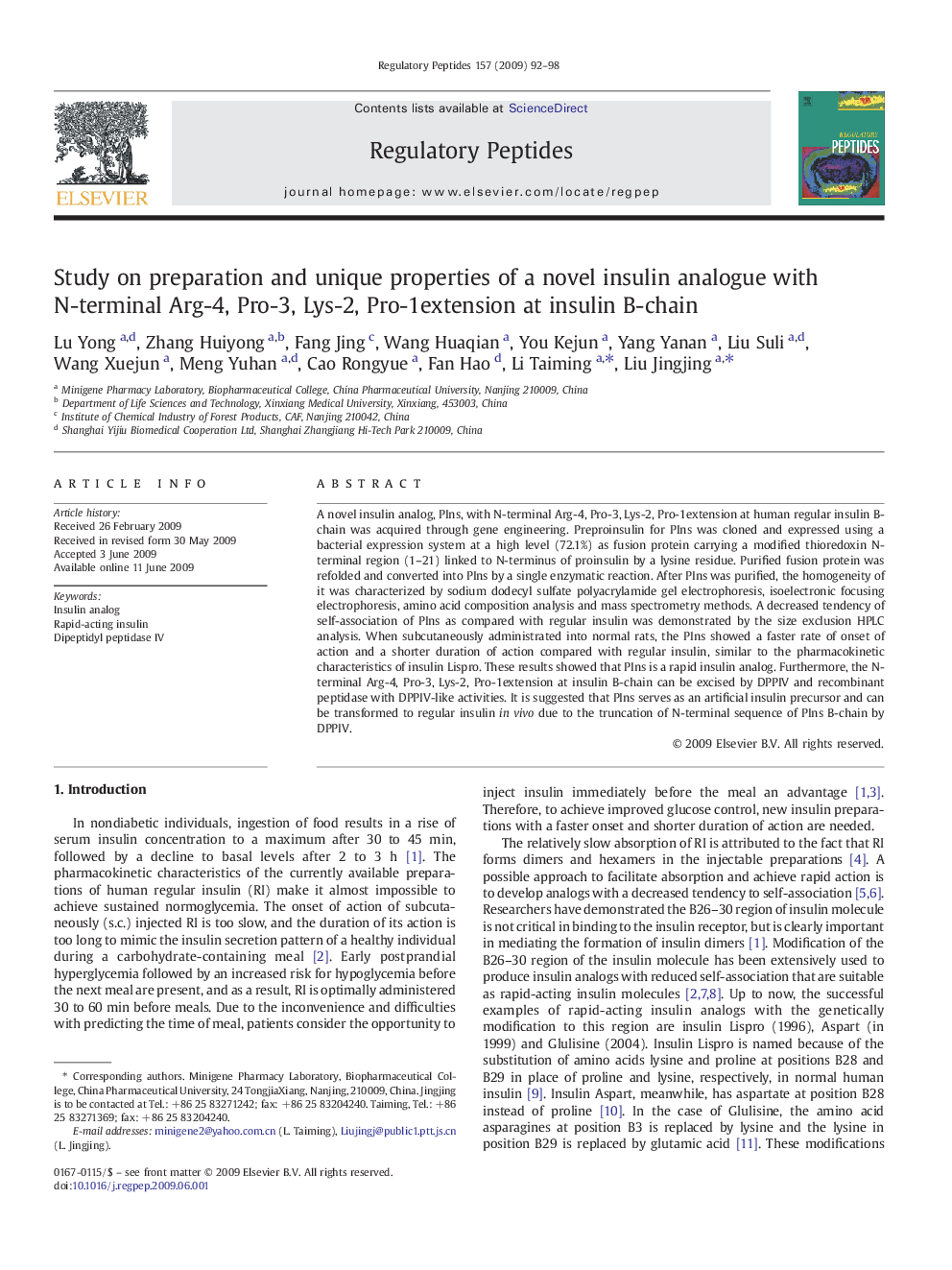| Article ID | Journal | Published Year | Pages | File Type |
|---|---|---|---|---|
| 2023057 | Regulatory Peptides | 2009 | 7 Pages |
A novel insulin analog, PIns, with N-terminal Arg-4, Pro-3, Lys-2, Pro-1extension at human regular insulin B-chain was acquired through gene engineering. Preproinsulin for PIns was cloned and expressed using a bacterial expression system at a high level (72.1%) as fusion protein carrying a modified thioredoxin N-terminal region (1–21) linked to N-terminus of proinsulin by a lysine residue. Purified fusion protein was refolded and converted into PIns by a single enzymatic reaction. After PIns was purified, the homogeneity of it was characterized by sodium dodecyl sulfate polyacrylamide gel electrophoresis, isoelectronic focusing electrophoresis, amino acid composition analysis and mass spectrometry methods. A decreased tendency of self-association of PIns as compared with regular insulin was demonstrated by the size exclusion HPLC analysis. When subcutaneously administrated into normal rats, the PIns showed a faster rate of onset of action and a shorter duration of action compared with regular insulin, similar to the pharmacokinetic characteristics of insulin Lispro. These results showed that PIns is a rapid insulin analog. Furthermore, the N-terminal Arg-4, Pro-3, Lys-2, Pro-1extension at insulin B-chain can be excised by DPPIV and recombinant peptidase with DPPIV-like activities. It is suggested that PIns serves as an artificial insulin precursor and can be transformed to regular insulin in vivo due to the truncation of N-terminal sequence of PIns B-chain by DPPIV.
